#vintage rickenbacker
Text


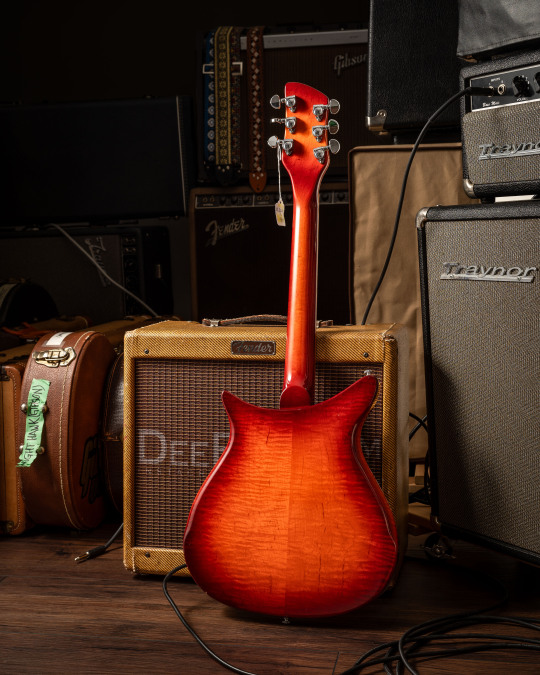
1983 Electro ES-16, made by Rickenbacker.
This guitar is a bit of a mystery. Technically it's a "reissue", as the originals were made in very limited quantities between 1964 and ~1969, and then another small run appears in 1983 only (or at least I can't find any from 1982 or 1984, anyway…). The hearsay is that Ric came across NOS parts for these in '83 and did a short run to blow them out, but that is 100% unverified. If anyone knows why ES-16s went out of production for 14 or 15 years and then popped up again for a short time in '83, please let me know!
#rickenbacker#electro#electro es16#es-16#3/4 size guitar#small guitar#student guitar#budget guitar#rickenbacker guitar#vintage guitar#vintage rickenbacker#ric#guitar#guitars#guitar photography
28 notes
·
View notes
Text

My fav FGs......🥰
20 notes
·
View notes
Text

Easy to play and sweet tone! 1967 Rickenbacker 610, Hard to find solid body model
28 notes
·
View notes
Text

46 notes
·
View notes
Text

Rickenbacker
19 notes
·
View notes
Text

Nieuport C.1 replica N856AD (left) with Subaru engine and Nieuport II replica N2535N (right) with Volkswagen engine.
After entering WW1, the young U.S. Army Air Service (USAAS) did not have fighter aircraft of their own. To fill this void they were assigned French built Nieuport 28 C.1.
Many young American aces, like Eddie Rickenbacker, scored their first victories in a Nieuport.
These beautiful birds graced the flight line at the Mid-Eastern Regional Fly-in (MERFI), Grimes Field (I74), Urbana, Ohio. August 20, 2022.
#avgeek#aviation#history#aviation history#vintage#airplane#ww1#nieuport#my photgraphy#original photography on tumblr#my writing#wwi#pilots#fighters#fighter pilot#eddie rickenbacker#fly#flying#early aviation#black and white photography
24 notes
·
View notes
Text
Post WWII Rickenbacker M12
Unsure of the date, but there is a ck in the name, not ch, like pre WWII. 2 6L6, 6SJ7, 6SN7. Not pumped up, fairly quiet, nice cleans.


#Toms-Amps.com#Toms Amps#Rickenbacker#Rickenbacher#Vintage Amp#Vintage Amplifier#Backline#Detroit Studio Rental#Detroit#Studio#Rental#Studio Rental#Amplifiers#1940s
0 notes
Text
unleashing my autism on bocchi's les paul custom
i've seen a lot of speculation about bocchi bocchi the rock's guitar and like... i am about as neck deep in vintage guitar lore as your average blues lawyer or retiree in a lynyrd skynyrd cover band so i have Opinions

the mangaka has stated that her choice of guitar was mostly/exclusively based on the colour - i haven't seen her comment specifically on the model/year beyond it being a Les Paul Custom, and I doubt she made any definitive decisions about this early on given that by her own admission she "couldn't tell the difference between a guitar and a bass" at the time
that said, it's a fortunate choice in that the flashy, expensive Gibson isn't just a great colour match for Bocchi, but serves as a great projection of the mismatch between Bocchi's "guitarhero" persona and ambitions, and her anxious, awkward personality - a flashy "tuxedo" guitar on a fidgeting teenager in a tracksuit
anyway in this post i will make the case that a) there is not a definitive answer to "what model of Gibson Les Paul Custom does bocchi bocchi the rock play" and b) there are a couple different pertinent answers, none of which take clear precedence
so unnecessarily comprehensive history of the electric guitar, the les paul custom and where bocchi's fits into it
if you don't care about guitar nerd diatribes (it will get more relevant, but not much less nerdy) skip to the *
(cut down from a much more unnecessarily detailed version XD)
over the first half of the 20th century acoustic guitars are in an arms race to get louder as the guitar gains popularity as a solo instrument and individual guitarists are playing to larger audience and playing a larger role in ensembles - in particular, resonator guitars and archtops develop during this period - but in the 30s and 40s various companies and individuals are increasingly experimenting with using electromagnetic pickups and electronic amplifiers to achieve greater volumes than are possible with purely acoustic methods, and as time progresses more people have the idea to forgo soundboxes and acoustic resonance entirely in favour of just electronically amplifying the string itself, to avoid the feedback issues inherent to hollowbody electrics
most notable are Rickenbacker who develop both the first electric guitar outright, a lap steel model for Hawaiian music in 1931, and the first electro-Spanish model (i.e. what we'd consider a conventional electric guitar) with a bakelite plastic body in 1935, and Paul Bigsby, whose custom builds for country legend Merle Travis in the late 40s are the first recognisable modern electric guitars
in the midst of that is jazz guitarist Les Paul, who develops his own prototype called "the log" based on an Epiphone hollowbody, and approaches Gibson with it in the mid 40s, though at the time they aren't interested
at the end of the 40s, radio engineer and inventor Leo Fender had been collaborating with Doc Kauffman - their joint venture saw Kauffman build electric lap steel guitars while Fender built amplifiers for them; when the pair go their separate ways, Fender decides to make his own solidbody guitar (which many would argue takes obvious cues from Bigsby's) which becomes the 1950 Esquire, shortly followed by the Broadcaster, renamed to the Telecaster sometime after
the Telecaster is big news because it's designed from the ground up for mass production - the materials are readily available woods like ash and maple, the neck is bolted on, and the electronics are all mounted in cavities routed onto a flat slab of wood for a body

and it's a hit
so suddenly Gibson wants a slice of the pie, and by 1952 they've brought Les Paul back in and released the first iteration of their Les Paul Model - with a carved top, decorative binding, a metallic gold finish, rosewood fretboard, and separate controls for each pickup, it's obvious Gibson fancies it a more premium product than what radio engineer Leo Fender could come up with, but at first it kinda sucks

the '52 les paul has shortcomings in its design and construction that really undermine it as a product, but over the course of the '50s it undergoes changes, first corrections to the neck angle, the introduction of an adjustable bridge in 1954 to improve intonation, the addition of more powerful, hum-cancelling "PAF" pickups in 1957 and a translucent "burst" finish in 1958, completing the archetypal 1958-1960 "burst" models which, owing to their low production numbers and popularity with famous guitarists, are now the most valuable vintage guitars in existence, with examples selling for the better part of a million dollars
*
alongside this, in 1953 Gibson releases the premium "Les Paul Custom" model, supposedly on Les Paul's own request as he wanted a classy guitar that looked "like a tuxedo" - so it featured a black finish with multi-ply binding and gold hardware - this is the Bocchi guitar in its original form
we know hers is a genuine Gibson and not one of the myriad copies made by other brands because the headstock logo is clearly shown, and we know it's a Custom because the black finish, gold hardware, inlays (block markers on the fretboard including the 1st fret, and the split diamond on the headstock), and binding are all archetypal Les Paul Custom features that only appear all together on the Custom model

the Custom developed alongside the Les Paul Standard, receiving the same updates; most Customs from the 50s have three pickups, but this layout is somewhat obstructive for players without offering all that much tonally, so later reproductions overwhelmingly favour the two pickup configuration which was less common on originals
anyway, this develops closer and closer to what we can recognise as the Bocchi guitar - we get the PAF pickups and Grover "keystone" tuners around 1958 and in 1960 we get the "reflector" style control knobs (more on this later)
'58-'60 Customs aren't quite as eye-wateringly expensive as the Bursts, but you could still probably buy a fairly nice house if you sold one
1960 is the final production year for the original Les Paul - the body style is replaced from '61 with the smaller model now known as the SG and then reintroduced in 1968 owing to increasing attention on big names who were still playing the "burst" models - guitarists you may recognise from your grandad's record collection; Les Pauls after this point can be regarded as "reissues" of the original model in some capacity
the Custom is reintroduced at the same time, with the most noticeable difference being the availability of new finish colours (not really relevant) and the change from "reflector" style knobs to "amp" or "witch hat" style knobs, which is something i'm gonna harp on about a little bit because it's important to my Bocchi thesis
the basic knob timeline is thus:
1954-1960 customs use all-black "top hat" knobs (left)
late 1960 customs use "reflector" style knobs, with silver or gold-ish inlays marked "volume" and "tone" (middle)
1968-1973 customs use "witch hat" style knobs, which are similar to reflector knobs but with a narrower shaft and a wider, flatter flared base where the numbers are written (right)
1974-1979 customs use reflector knobs again
1980 onwards customs overwhelmingly revert to top hat knobs, until the late 90s when Gibson starts producing models designed to closely replicate specific vintage model years, at which point you start to see the 1960 reflectors and the late 60s witch hats reproduced in relevant reissues

so the above info is most of the basis for my takes on this, let's move on to the bocchi guitar itself
there's two very important reasons i don't think it can be definitively identified, which are somewhat interconnected
the first reason is the pickup selector switch - the version of the guitar that appears in the anime, as well as a lot of the manga art, features a gold "poker chip" ring around the switch, along with a gold tip on the switch - where on a stock model the ring would be black, and marked with the "rhythm" and "treble" positions, while the tip on the switch would be either cream, an orange-y amber colour, which is the result of fading on 1950s plastic and sometimes imitated on modern repros, or black on some later models

^manga, anime and IRL
i would argue that at this point, this detail is well-established as canon, and that's significant because it means the guitar has been modified - a switch like that has never been stock on a Les Paul Custom, and frankly this means any details which could clearly identify Bocchi's guitar beyond "a Les Paul Custom" are things that could easily have been changed, leaving us nothing much to work with
but that's boring, so let's move on
the second thing which confounds identification of Bocchi's guitar is the fact the guitars are really hard to draw (my friend lauren @fabdante tells me they're like horses, because they have very specific unique proportions and look fucked up if you draw them slightly wrong)
that being the case, i think that the gold switch accoutrements developed either as a practical shortcut, or from referencing the guitar based off its first appearance in the manga - where the positions marked on the switch chip are somewhat visible, but the switch nut and washer being somewhat out of proportion makes those look like the switch chip, and i wouldn't be surprised if the gold tip was adopted either for simplicity, or simply referenced from an image where the amber switch tip appeared gold against the other gold hardware; anyway, here's that appearance
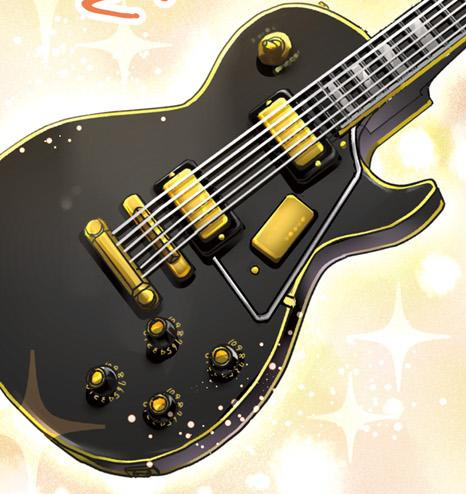
i would tend to agree with the fandom's consensus that this particular image is referenced from a reissue of a '68 model, something like this:
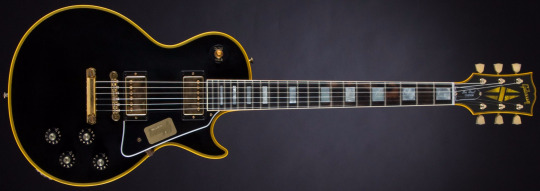
the knobs look like witch hat knobs, the binding is heavily yellowed as we see on a lot of reproductions, and the pickguard has the "Gibson custom" promotional sticker on it
...but i don't think this is a good basis for establishing the "canon" model of Bocchi's guitar
the numbers on the knobs appear to be written on the body, rather than the knobs themselves, which suggests that this was mainly referenced from an image like the one above, where some details aren't clearly visible - likewise the indistinctness of the switch ring
and the promotional sticker still being on the pickguard? did bocchi's dad even play this thing?
we know Hamaji was new to this stuff at the time - I would argue she was working from an imperfect reference here and hadn't really hashed out a lot of the details
i think it's more useful to look at the narrative overall, and later depictions of the guitar where its appearance is more settled, to get a better idea of this guitar and its provenance
all this to say that i would make the case, if you look later in the manga and the anime, while aspects of the guitar continue to be drawn somewhat off-model, as it were (particularly the pickguard and, early on, the position of the selector switch), it's much more common for the knobs to appear with the proportions of 1960-style reflector knobs:
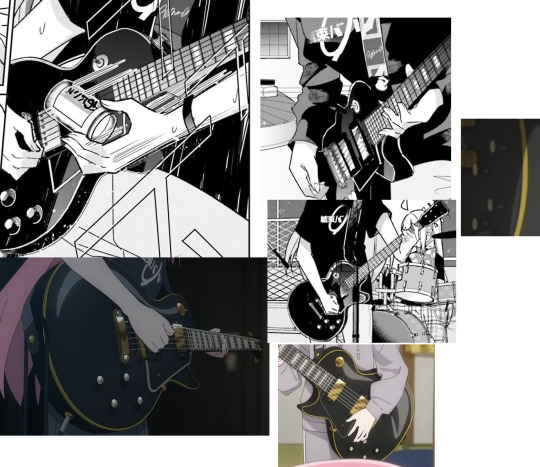
now, again, we're somewhat lacking in details to go off - the knobs are pretty much all we have, but the case i would make is that as the design becomes more established, it becomes more established in favour of a 1960 (reissue) model
that being the case, we can go ahead and eliminate some possibilities i would argue are at least "less likely" on the basis of reasonable context:
an actual 1960 model, especially with the rarer 2-pickup configuration, would be worth about 10 million yen or more - if bocchi's dad had one he a) wouldn't let his teenage daughter learn on it and take it to skeevy central Tokyo live houses and school concerts in a gig bag and b) would live somewhere much nicer
while i don't really see the promotional sticker on the pickguard in the guitar's first appearance as canon (the anime omits this detail, and the idea of bocchi's dad at least at some point having been into guitar enough to buy such an expensive model and then never bother to take the protective film off the pickguard, but also let ~12 year old bocchi play it... wouldn't really make sense) it seems fair to assume it's at least a 21st century model
the only "vintage" examples post-1960 that use reflector knobs are the 70s models, which bocchi's dad doesn't seem anywhere near old enough to own from new, and while this less desirable period of vintage Gibsons is a more plausible secondhand buy for an average dude presumably in his 20s than a 1960s model, there's no particular sign of the guitar being that old
anyway, maybe that stuff goes without saying
let's go over some facts and speculations to get to the conclusion
with regard to bocchi's dad, he seems to be in his 20s or 30s as best i can tell given his lack of a face, so realistically he bought the guitar at some point in his 20s, probably in the 2010s
there's no such thing as a cheap Les Paul Custom, the lowest prices are probably around 2-3000 USD or around 300k JPY
of modern historic reproductions, 1960 and 1968 are both years that have been reproduced, but in relatively small numbers since the 1960 model is not substantially distinguished from other 1957-1960 models, except by its knobs, and post-'68 Les Pauls are nowhere near as desirable as the original run
historic reproductions are generally significantly more expensive than the "regular" Les Paul Custom model that doesn't have a historic year attached to it
not of particular significance to you, but of great annoyance to me, is that modern repros are a pain in the ass to google because all the historic reproductions are "Custom Shop" models even if they're not "Les Paul Custom" models, and the Burst models are far more widely reproduced
anyway to conclude:
official manga and anime depictions of Bocchi's Les Paul clearly depict it as a Gibson Les Paul Custom, but are neither consistent enough nor detailed enough to determine a more specific variant definitively - it could be any model of "Black Beauty"-style Custom, without more textual information, which is somewhat frustrating, but also (in my view) worthwhile to acknowledge that there is no definitive answer more specific than "Les Paul Custom"
the most likely candidates are: a "regular" base-model Custom from around 2000-2020, a 1960 reissue model Custom or a 1968 reissue model Custom
probably the most realistic option is the basic Les Paul Custom - this is the Custom Shop's flagship model and already a very expensive guitar, but they can be had for prices that would probably be relatively manageable for someone with a decent job (someone who hasn't had kids yet, anyway) - the knobs would have to have been replaced, but as I've mentioned we already know that the pickup selector hardware is aftermarket, so why not the knobs as well? this is a realistic answer, I just find it frustratingly vague
i personally favour that it's a 1960 reissue - it's not a huge year for reissues but there have been some in the past decade or so and I would argue it's the reissue year that most closely matches the details of the guitar as they appear through most of the run
the consensus in favour of the '68 reissue has some foundation - the first appearance of the guitar definitely seems to be referenced from a '68 reissue, as well as some other early illustrations; however, i would argue that few depictions specifically resemble the '68 as the manga progresses, and none in the anime
#bocchi the rock#hitori gotoh#btr#sally rambles for 2500 words only to tell you (spoiler) that there isnt a clear answer
174 notes
·
View notes
Photo
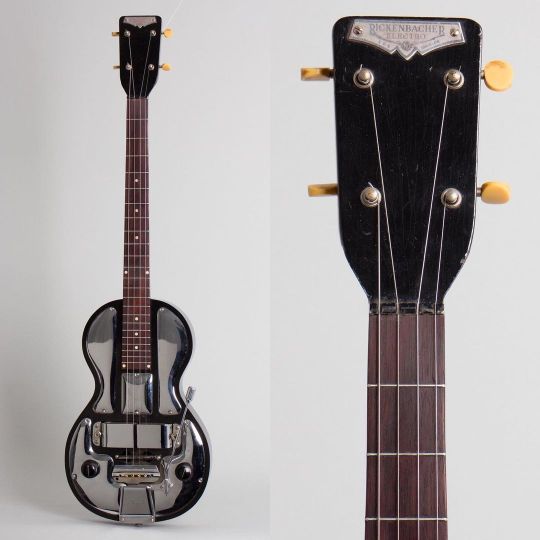
Just arrived!-Rickenbacker Electro Spanish Model B Tenor Model Solid Body Electric Guitar (1939), made in Los Angeles, California, serial # C2122, polished Bakelite finish, black bakelite body, maple neck with rosewood fingerboard, original black hard shell case. (Please click on the link in our profile to learn more about this historical instrument). - Here is an exceptionally rare and historically interesting American guitar, a most unusual variation of the first commercially important electric Spanish guitar. This is the four-string TENOR version of the Rickenbacker Electro-Spanish guitar. Introduced in 1935 at the same time as the famed Bakelite "Model B" Hawaiian Guitar, the Electro Spanish was not successful and in comparatively limited production for just a few years. Only a very small proportion were built up as tenors, making this the rarest of the rare! - - - - - #rickenbacker #rickenbackerelectrospanishb #rickenbackertenoguitar #rickenbackermodelb #rareguitars #rareguitar #rickenbackerbakelite #kauffmanvibrola #guitarforsale #retrofretvintageguitars #raretenorguitar #electrictenorguitar (at Retrofret Vintage Guitars) https://www.instagram.com/p/CqYT5hJO178/?igshid=NGJjMDIxMWI=
#rickenbacker#rickenbackerelectrospanishb#rickenbackertenoguitar#rickenbackermodelb#rareguitars#rareguitar#rickenbackerbakelite#kauffmanvibrola#guitarforsale#retrofretvintageguitars#raretenorguitar#electrictenorguitar
37 notes
·
View notes
Photo
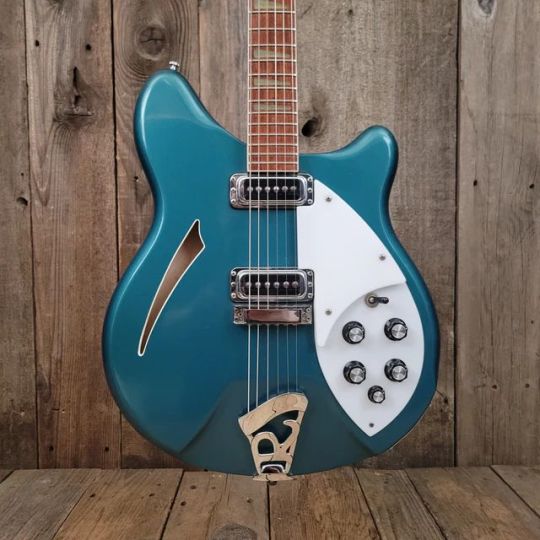




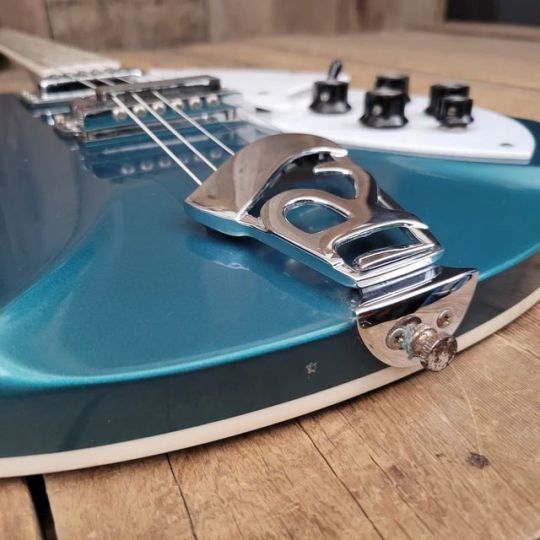

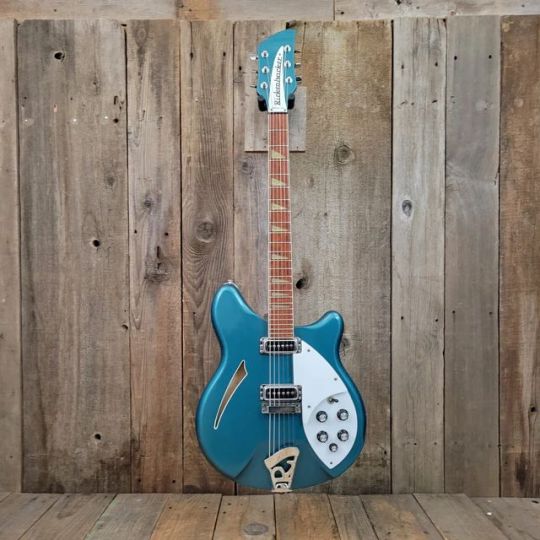


Rickenbacker 360 Turquoise 1994 – Mahar's Vintage Guitars
32 notes
·
View notes
Text
Taylor’s Equipment
Guitars
Bilt Corvaire
BilT Relevator LS
BilT Volare
BilT Zaftig
Danelectro 59 DC Electric Guitar
Eko 500 V2
Epiphone Casino
'89 Epiphone Sheraton (with Arcane Ultratron pickups)
Fender '75 Starcaster
Fender Blacktop Jaguar HH Electric Guitar
Fender Jazzmasters
Custom Fender Jazzmasters with humbuckers
Fender Classic Series '72 Telecaster Thinline
Fender Telecaster
Fender Coronado II Wildwood III
Gibson 20th Anniversary 1957 Les Paul Custom Black Beauty
Gibson ES-390
Gibson Les Paul Goldtop Electric Guitar
Gibson Les Paul Junior Double Cut VOS
Gibson Les Paul Junior Special Exclusive
Gibson Midtown Custom (with Bareknuckle Mississippi Queen P90 pickups)
Gibson SG '61 Reissue
Gibson Songwriter Deluxe Studio EC Acoustic Guitar
Godin 5th Avenue Kingpin
Gretsch G6119-1962HT Tennessee Rose HT
Hagström Impala
1966 Hagström Viking Electric Guitar
Kay Apollo II/Titan 1960's
Les Paul Special
'58 Les Paul Jr
Martin 000-18 Golden Era
Martin Steel-String Backpacker Acoustic Guitar
Neptune Singlecut Baritone
Rickenbacker 360
Supro Coronado II
Taylor 414ce
Other Guitars
Jerry Jones Baby Sitar
Kala Archtop KA-JTE Tenor Ukulele
Bass
Fender Jaguar Baritone Custom
Squier Jaguar Bass
Squier Jaguar Vintage Modified Short Scale Bass
Fender Precision Bass
Amps
1960 Watkins Dominator
65 Amps Tupelo
Divided By 13 RSA 23
Marshall JCM 2000 DSL 100 Dual Super Lead 2-Channel 100-Watt Guitar Amp Head
Roland JC 120
Silverface Fender Deluxe Reverb
Supro Statesman 50W Head
Supro 1695T Black Magick
Traynor YBA-1A MKII
Vox AC30
Pedals
Alexander SpaceXpander
Boss CE-1 Chorus Ensemble
Boss CE-2W Chorus
Boss DC-2 Dimension C
Boss DD-20 Giga Delay Digital Delay Pedal
Boss RV-3 Digital Reverb/Delay
DigiTech Whammy (4th Gen)
DigiTech X-Series DigiVerb
EarthQuaker Devices Dirt Transmitter Fuzz Pedal
EarthQuaker Devices Ghost Echo Reverb
EarthQuaker Devices Grand Orbiter V2
EarthQuaker Devices Hoof
EarthQuaker Devices Rainbow Machine Polyphonic Pitch Mesmerizer
EarthQuaker Devices Pitch Bay
EarthQuaker Devices Terminal Fuzz
EarthQuaker Devices Tone Job EQ
EarthQuaker Devices Transmisser
Electro-Harmonix POG2 Polyphonic Octave Generator Guitar Effects Pedal
Empress Echosystem
Empress Effects Multidrive Overdrive Guitar Effects Pedal
Empress Effects Reverb
Eventide H9 Max Harmonizer Multi-Effects Pedal
Heavy Electronics Radio Havana
JHS Pedals Mini Foot Fuzz Silicon Fuzz Pedal
Mantic Effects Proverb Reverb
Maxon AD-999 Pro Analog Delay
Mr.Black Supermoon
MXR M101 Phase 90
Old Blood Noise Endeavors Procession
Old Blood Noise Endeavors Reflector Chorus
Pearl CE22 Chorus Ensemble
Pigtronix Mothership Analog Synthesizer
Rawkworks Light Overdrive
Red Panda Context
Strymon blueSky Reverberator Pedal
Strymon Ola dBucket Chorus & Vibrato
Strymon TimeLine Delay Pedal
TC Electronic Ditto Looper Guitar Effects Pedal
TC Electronic Polytune 2 Pedal Tuner
Visual Sound Garagetone Chainsaw Distortion
Z.Vex Vexter Series Fuzz Factory
ZVex Vexter Series VSD Super Duper 2-in-1 Boost Pedal
Power Supplies
CIOKS DC10 Power Supply
Picks
Clayton Custom Orange Delrin 0.60mm
Straps
Ernie Ball Polypro Guitar Strap
LETGOdwork Anchor Guitar Strap
LETGOdwork X-Bird Guitar Strap
Percussion/Drum Sets
Truth Custom Turquoise Glass Vintage Drum Kit
Roland SPD-SX Sampling Pad
Yamaha 2.5 Octave Concert Band Bells
Drumsticks
Vic Firth X55A Drumsticks
Vic Firth X5A Drumsticks
Vic Firth 3A Drumsticks
MIDI Controllers
RJM Mastermind GT/22 MIDI Foot Controller
In-Ear Monitors
Ultimate Ears Ue 7 Pro In-Ear Monitors
Phew okay this took a while! to be continued:)
#taylor york#taylor benjamin york#paramore#fender#gibson#les paul#bilt#hagström#vic firth#earthquaker#equipment#tayloryorkie
28 notes
·
View notes
Text
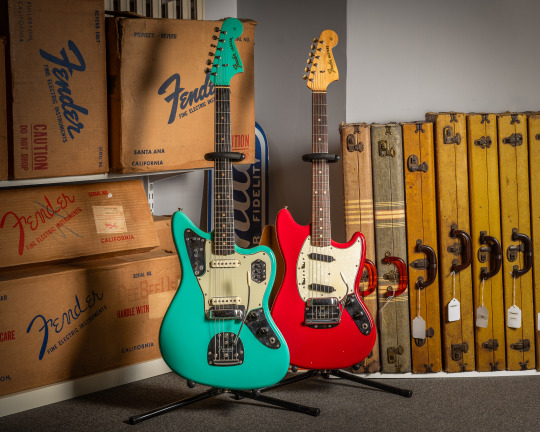
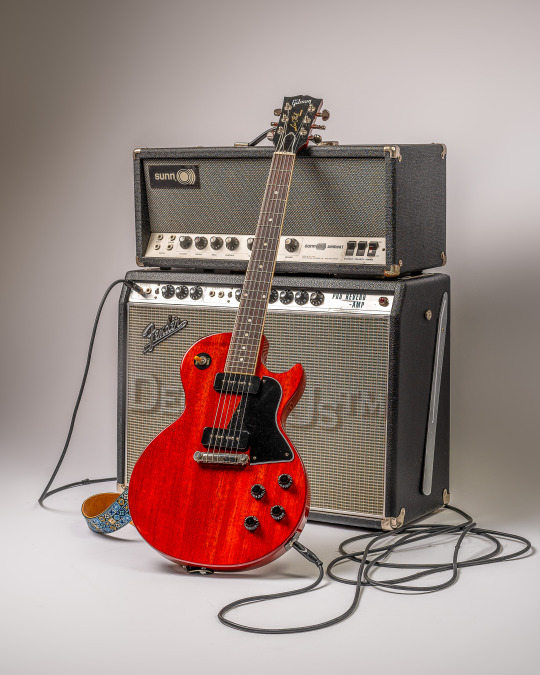




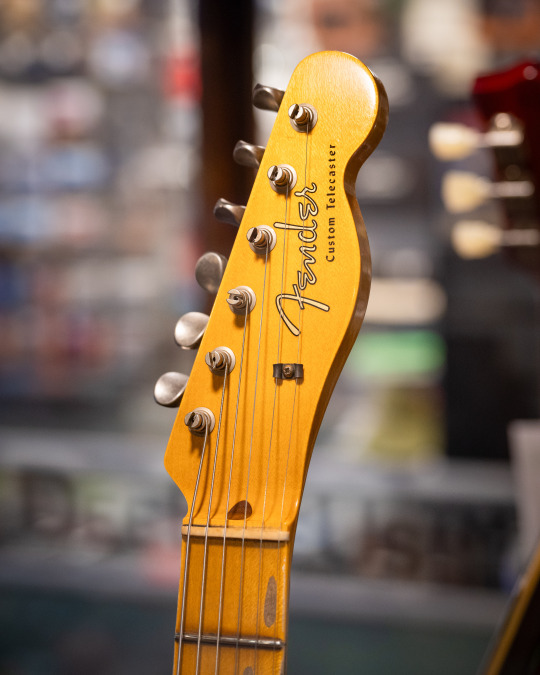

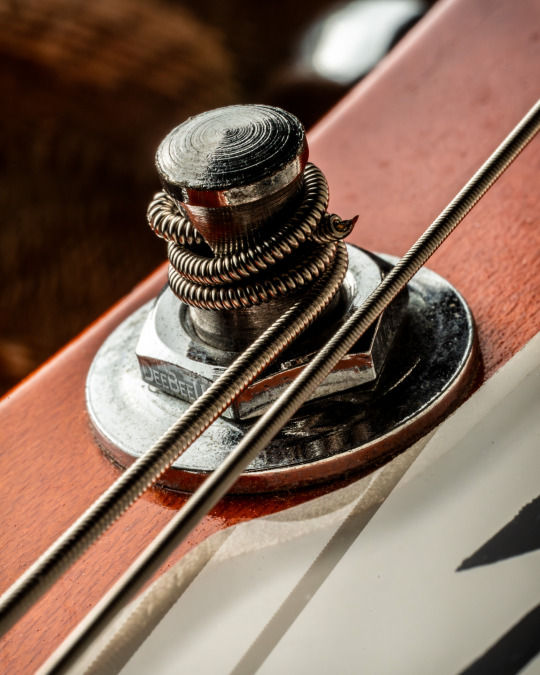
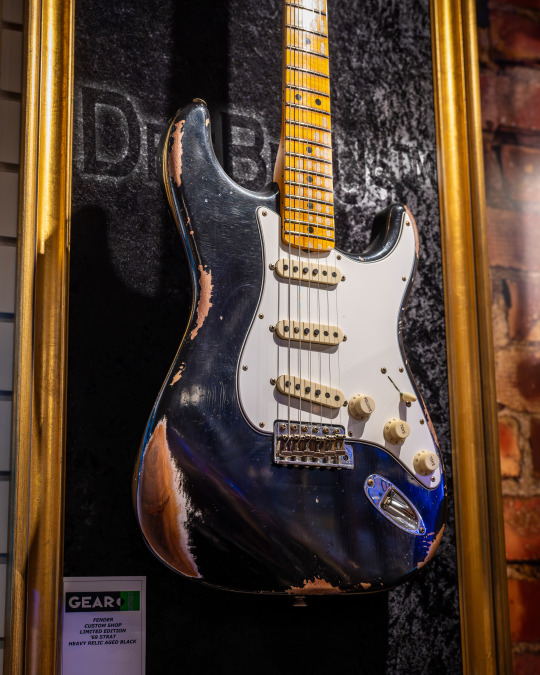
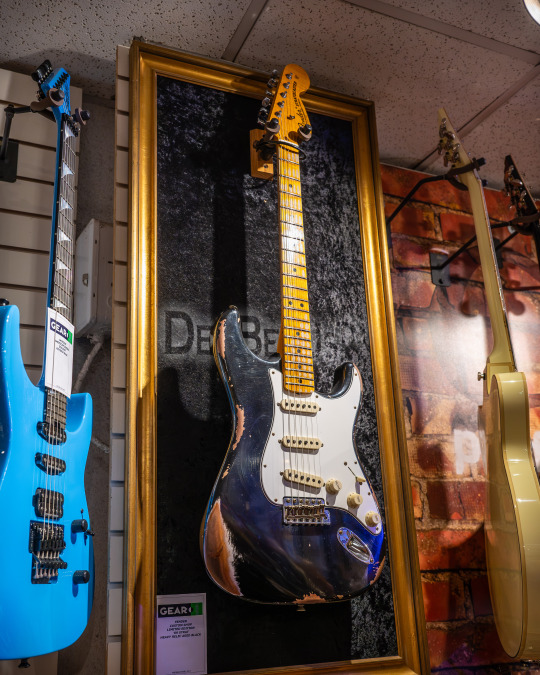

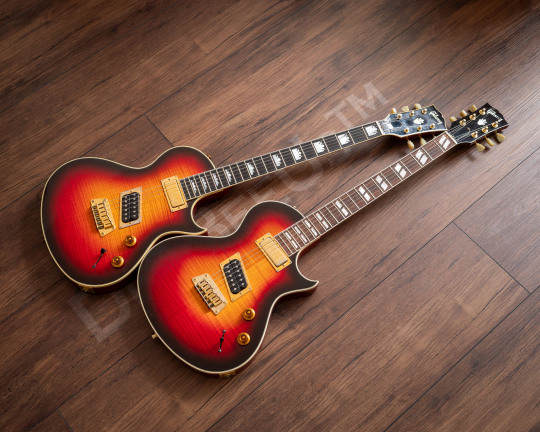


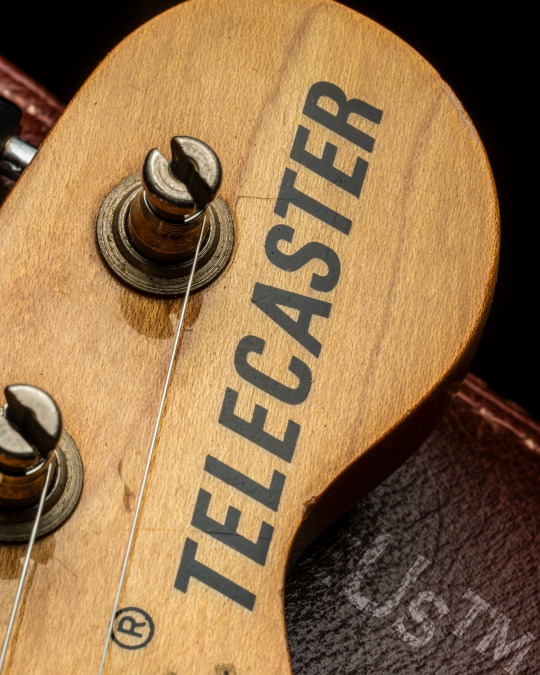
I have been really bad at posting on tumblr lately so here is every guitar pic I have posted to insta since the beginning of 2024
1962 Jag & 1966 Mustang from Fender historian and author Terry Foster's collection
2020 Gibson USA Les Paul Special with 1969 Sunn and 1968 Fender amps. I sold this guitar in the closing days of December...but not to worry I used the money to buy something new and fun! See below...
Chris Bear with 1983 Electro ES-16
Chris Bear with 1968 ES-335
Made a trip to Gear Music in Oakville Canada and saw this lovely Limited Edition Fender Custom Shop Twisted Tele Custom Journeyman Relic in Aged Ocean Turquoise
See #5
See #6
1983 ES-16 Macro
More from Gear Music, Oakville: brand new Fender Custom Shop '69 Strat Heavy Relic
See #9
I'm seein' double here! Four Krustys! Here's what I bought with the money form selling the Cherry Les Paul Special (see #2): 1993 Gibson Nighthawk CS-2 (with the 1998 Nighthawk ST-2, right, that I already owned)
1993 Gibson Nighthawk CS-2, top, with the 1998 Nighthawk ST-2
1993 Gibson Nighthawk CS-2, top, with the 1998 Nighthawk ST-2...note the ebony board and bound headstock on the Custom.
1965 Traynor YBA2 Bass Mate & 1957 Fender Duo Sonic
1969 Fender Telecaster Thinline, macro.
#rickenbacker#electro#es-16#fender#gibson#custom shop#guitar#guitars#vintage guitar#vintage fender#vintage gibson#traynor#amp#amps#vintage amp#guitar collection#guitar photography#gibson es335#es-335#gibson nighthawk#fender duosonic#small guitars#electro es-16#telecaster#thinline#electric guitar#Les Paul#Les Paul Special#relic#reissue
42 notes
·
View notes
Text

480&481 FG
#guitars#rickenbacker#rick#480fg#481fg#fireglo#collection#love#ricfreak#ric#collectible#vintage#rare
70 notes
·
View notes
Photo
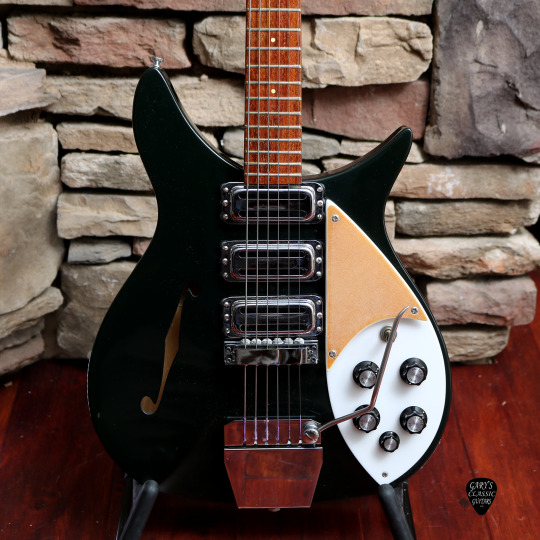
1967 Rickenbacker 325 Black
36 notes
·
View notes
Text
You know there's a lot of guitars on my wishlist. And yes I'd kill a man for a Rickenbacker 330, a Trini Lopez, or a Johnny Marr jag. But something about the balck orange sunburst vintage strats.... and with the rosewood fretboard... gddddddd.... Like ok beautifullll... gongeous...
1 note
·
View note
Text
A Expensive However Valuable Lesson in Poker Slot
When it comes to speed, it is a must that people discover a means to establish rank, and speed races satisfy this want. As soon as reserved for the wealthy, F1 racing has advanced to incorporate anyone with the courage to face the races and the talent to construct the machines. Certainly "inexperienced" vehicles have come a good distance in the pace class, and a few environmentally acutely aware racers have the auto racing awards to prove it. Can you wow us along with your auto racing experience? It is the artiestenbureau which provide professionals who could make all of the arrangements to entertain the invitees to the utmost extent.
Joe Perry is another great guitarist who would somewhat keep things simple. Try to "walk this manner" and tell us who performed a Gibson Les Paul Junior by a Maestro Fuzz-Tone with his band in the '70s; are you able to? Can you figure out which alternative guitarist will get his frequency with vintage amps, a Line 6 DL4 and a Rickenbacker 360? Although he owns too many guitars and pedals to list, he usually sticks to his favorites - the Rickenbacker 360 and a customized Fender Telecaster. Preferring only Gibson guitars, Marshall vintage tube amps and two pedals, his signature sound comes from his unique method of enjoying.
While the math works in your favor when it comes to probabilities, you will need to bear in mind that enjoying multiple cards also offers you the chance to lose extra money. Straus is one among three Corridor of Famers to die whereas enjoying poker (along with Wild Invoice Hickok and Tom Abdo). iconfunslot.com opening cam was patented by WSOP bracelet winner Henry Orenstein and first used in the Late Night time Poker tv sequence. F1 is a years-outdated tradition that has perfected the art of automotive racing, and it's the most recognized racing brand in the world. Nearly each automotive model and kind participates in a race of some kind.
0 notes